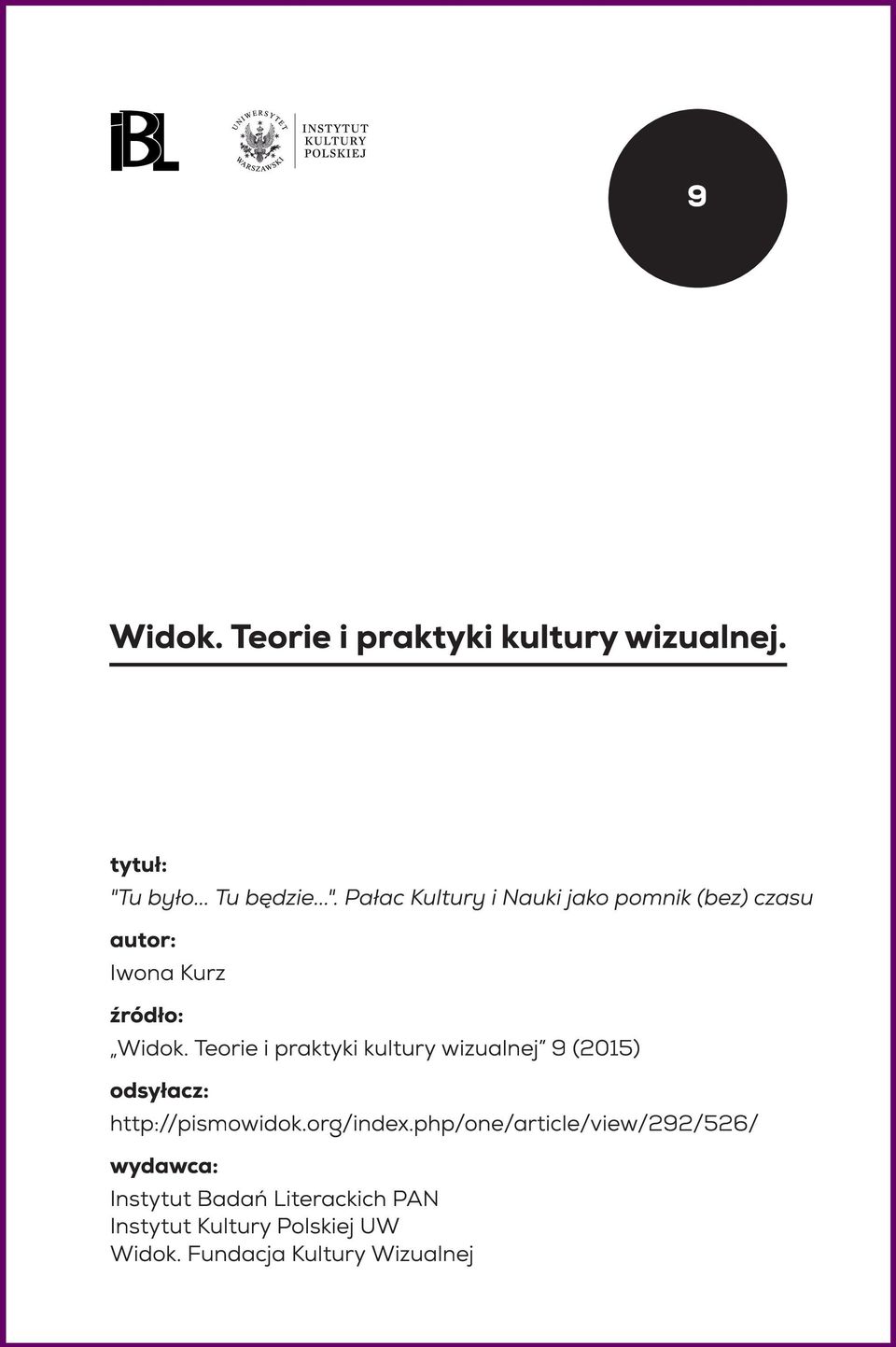Widok. Teorie i Praktyki Kultury Wizualnej
View. Theories and Practices of Visual Culture
Publishing House: Widok. Fundacja Kultury Wizualnej
Subject(s): Fine Arts / Performing Arts
Frequency: 4 issues
Online-ISSN: 2300-200X
Status: Active
- 2017
- 2018
- 2019
- 2020
- 2021
- 2022
- 2023
- 2024
- Issue No. 17
- Issue No. 18
- Issue No. 19
- Issue No. 20
- Issue No. 21
- Issue No. 22
- Issue No. 23
- Issue No. 24
- Issue No. 25
- Issue No. 26
- Issue No. 27
- Issue No. 28
- Issue No. 29
- Issue No. 30
- Issue No. 31
- Issue No. 32
- Issue No. 33
- Issue No. 34
- Issue No. 35
- Issue No. 36
- Issue No. 37
- Issue No. 38
Articles list
{{ article.TitleOriginalLanguage }}
{{ article.TitleOriginalLanguage }}
({{ article.TitleEnglish }})
- Publication: {{ article.Publisher }} ({{ article.Issue }})
- Author(s): {{ article.Authors }}
- Contributor(s): {{ article.Contributors }}
- Language: {{ article.Language }}
- Subject(s): {{ article.Subjects }}
- Issue: {{ article.Issue }}
- Page Range: {{ article.PageRange }}
- No. of Pages: {{ article.NumberOfPages }}
- Keywords: {{ article.Keywords }}
- Summary/Abstract: {{ article.SummaryAbstract }}
- Price: {{ common.currency(article.Price) }}
Short Description
The word “view” seems neutral enough. A view is simply what appears before our eyes wherever we turn our heads. Often, in order to access a view, we only need to focus our attention, or adjust our eyes. The universal Polish dictionary defines a “view” as a “seen space” and a “landscape,” as well as “an image” or the “appearance of something” as in “seeing someone or something.” The definition includes phrases that incorporate the word, such as “with a view to” and “on view,” as well as expressions that point to intentional actions connected with the practices of seeing (e.g. “viewing point”). This normative definition reveals an entanglement characteristic of visual practices. The illusion of automatic seeing is accompanied by the concept where seeing is understood as a conscious activity. A “view” is simultaneously a space commanded by the viewing subject and an “image” understood as a framed space loaded with “iconic differences,” a surplus of meaning. The “view” is seen as an unidentifiable distance that coexists with “a view,” of which we can ourselves become a part. And then there is a “view” established by sight, which is the space of concentration, but can quickly become a space of wandering and blurriness.
By establishing a journal titled “View,” we’re interested in unraveling this entanglement, investigating the discipline of viewing’s single threads and motives, but always keeping in mind its complexity. We want to become a space of thought where we examine both how seeing is understood in contemporary theory and research within the humanities, as well as how it is put into use in different types of practices – both vernacular and artistic. Finally, in our work on images, we remember that their sense is often completed by words. We remain conscious that words and images constantly reflect each other, that literature and the written word serve not only as a space of theorizing seeing, but are also its expression and record. Lastly, we do not forget that the category of the gaze is central also in literature.
Our editorial board consists of scholars with various backgrounds in Polish studies, cultural studies, philosophy, art history, as well as artistic and curatorial practice. Our interests intersect in the field of visual culture. For us, this term designates an anthropological perspective, one that doesn’t privilege sight, but rather points to the visual as meaningful and inspiring. We believe that there is no single point from which one can view the cultural panorama in its entirety. A “view” is always the effect of looking from a certain angle.

